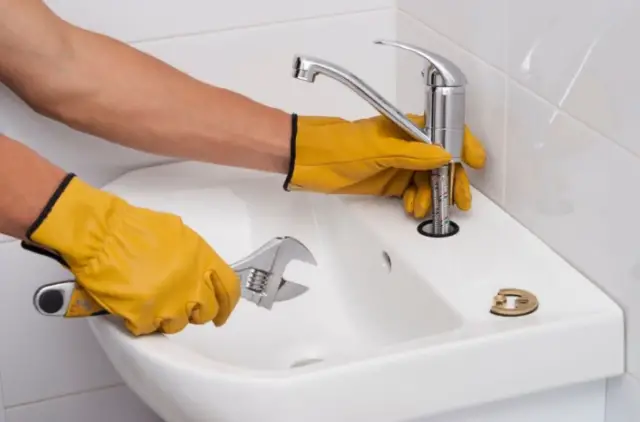Low water pressure in the bathroom can be incredibly frustrating. Whether you’re trying to wash your hands, brush your teeth, or take a relaxing shower, weak water flow can put a damper on your daily routine. In this blog post, we’ll explore the common reasons behind low water pressure in bathroom sinks and provide practical solutions to address the issue.

1. Flow Restrictor In Place
- What is a flow restrictor? It’s a small plastic disc with a hole in it that is inserted into the faucet just inside the aerator mesh.
- Why might it cause low water pressure?
- The hole in the flow restrictor may be too small, limiting water flow.
- The flow restrictor could be partially plugged, further restricting water flow.
- How to fix it:
- Unscrew the aerator piece from the end of the faucet.
- Inside the aerator piece, you’ll find the flow restrictor. Remove it.
- Increase the size of the restrictor hole by gently using a screwdriver head or the end of a sharp knife to remove some of the plastic1.
2. Plugged Water Aerator
- What is the aerator? It’s the mesh screen at the end of the faucet.
- Why might it cause low water pressure?
- Accumulated mineral deposits or debris can clog the aerator, reducing water flow.
- How to fix it:
- Remove the aerator and clean it thoroughly. Soak it in vinegar to dissolve mineral buildup, then rinse and reattach it to the faucet.
3. Incompletely Opened Shut-Off Valves
- What are shut-off valves? These valves control water flow to individual fixtures.
- Why might they cause low water pressure?
- If the shut-off valves are not fully open, water flow will be restricted.
- How to fix it:
- Locate the shut-off valves under the sink. Turn them fully counterclockwise to ensure they are fully open.
4. Plugged Water Supply Lines
- What are water supply lines? These are the pipes that deliver water to your faucet.
- Why might they cause low water pressure?
- Accumulated sediment or debris in the supply lines can hinder water flow.
- How to fix it:
- Turn off the water supply.
- Disconnect the supply lines from the faucet and check for blockages.
- Clean or replace the supply lines as needed.
Conclusion
Before calling a plumber, troubleshoot the low water pressure issue in your bathroom sink using these DIY methods. Remember to check if the problem is localized to the bathroom faucet or affects other areas of your home. By addressing these common causes, you can restore proper water flow and make your daily routines more enjoyable.
Frequently Asked Questions About Low Water Pressure in Bathroom Sinks:
- Why is the water pressure low only in my bathroom sink?
- If the issue is localized to the bathroom faucet, it could be due to a flow restrictor or other factors specific to that fixture.
- What is a flow restrictor, and how does it affect water pressure?
- A flow restrictor is a small plastic disc inside the faucet that limits water flow. It may be too small or partially clogged, causing low pressure. You can remove it to improve flow.
- How can I clean a clogged water aerator?
- The aerator, that mesh screen at the end of the faucet, can accumulate mineral deposits. Remove it, soak it in vinegar, and rinse to clear any blockages.
- What are shut-off valves, and how do they impact water pressure?
- Shut-off valves control water flow to fixtures. If they’re not fully open, water pressure will be restricted. Locate them under the sink and ensure they’re fully open.
- Could plugged water supply lines be causing low pressure?
- Yes, sediment or debris in the supply lines can hinder water flow. Turn off the water supply, disconnect the lines, and check for blockages.
- Is low water pressure a common issue in bathrooms?
- Yes, it’s a common problem. Factors like flow restrictors, aerator blockages, and shut-off valves can contribute to low pressure.
- What if my neighbors also have low water pressure?
- If it’s a community-wide issue, consider installing a water pressure booster. Otherwise, check your water pressure regulator or main shut-off valve.
- How can I tell if there’s a leak in the main water supply?
- Inspect your basement or garage where the main supply enters the house. A wet spot suggests a leak and requires professional attention.
- Is low water pressure always a plumbing emergency?
- Not necessarily. Troubleshoot by checking local apps for pressure complaints and inspecting valves before calling a plumber.
- Can I fix low water pressure myself?
- Absolutely! Try these DIY methods first. If the issue persists, consult a professional




